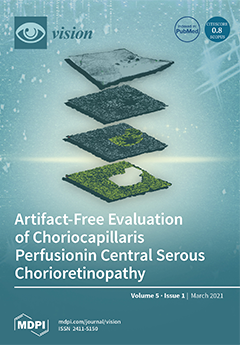Purpose: To investigate the corneal characteristics in individuals with autism spectrum disorder (ASD) and age-matched typical development (TD) participants. Methods: This cross-sectional, clinically based study compared children with ASD to age-matched TD participants. Corneal topography was measured with a portable EyeSys Vista system.
[...] Read more.
Purpose: To investigate the corneal characteristics in individuals with autism spectrum disorder (ASD) and age-matched typical development (TD) participants. Methods: This cross-sectional, clinically based study compared children with ASD to age-matched TD participants. Corneal topography was measured with a portable EyeSys Vista system. The distance visual acuity (VA) and the contrast sensitivity (CS) were determined. The refractive error (RE) was assessed using a 2WIN autorefractometer. Results: A total of 31 children with ASD (mean age: 12.78 ± 4.49 years), and 60 participants with TD (mean age: 13.65 ± 3.56 years) were recruited. The two groups were similar in age (t = −2.084,
p = 0.075) and VA (t = −0.35,
p = 0.32). Most of the children with ASD had a significant amount of refractive errors (REs; range: +5.25 to −5.50 DS), and astigmatism was dominant (range: −0.25 to −4.50 DC). There was no statistically significant difference between both groups in terms of average corneal power (t = 1.12,
p = 0.39). The children with ASD and participants with TD also did not differ significantly in terms of corneal shape descriptors (
p > 0.05), such as corneal asphericity, inferior superior index, opposite sector index, and differential sector index. The spherical equivalent did not differ significantly between the ASD participants and participants with TD (t = 1.15,
p = 0.15). There was a significant difference (
p < 0.05) in the astigmatism component between the ASD participants and the participants with TD.
Full article






